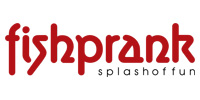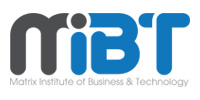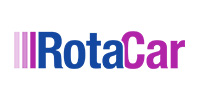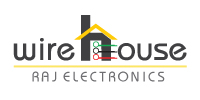BLOCKCHAIN
A blockchain is a distributed ledger database of all peer-to-peer transactions across a network. Participants can validate transactions and use this technology, without the need for a central clearing authority. Potential applications can include transfers of fund, trading settlements, voting and many other issues.
Let’s start with some definitions which are simple. Blockchain is the infrastructure that enables cryptocurrency to exist. Bitcoin is the name of the best-known cryptocurrency, the one that created blockchain technology for. A cryptocurrency is an exchange medium, but is digital, and uses encryption techniques to control the creation of monetary units and to verify the transfer.
from a business perspective, it’s useful to think of blockchain technology as a kind of business process improvement software of the next generation. Collaborative technology, such as blockchain, offers the potential to transform the business process that take place between business, dramatically reducing the “cost of confidence”. That’s why it can deliver substantially higher returns for each invest.
For a more in-depth dive into cryptocurrencies, we recommend you read:
- Carving up crypto provides an overview of how regulators, both in the United States and abroad, are thinking about cryptocurrency in financial services.
- In the case of Cryptocurrencies: Time to consider plan B, we discuss potential methods for cryptocurrencies accounting.
Ethereum is a decentralized, open-source, blockchain-based software platform used for its own cryptocurrency, ether. It allows the building and running of SmartContracts and Distributed Applications (DjApps) without any third party downtime, fraud, control or interference.
Etherum is not only a platform but also a programming language(turing complete)running on a running on a blockchain that let’s developers create and publish distributed application.
Major takeaways Etherium is an open-source computing and operating platform.
- It also has a cryptocurrency associated to it, either.
- One of the major projects in microsoft's partnership with ConsenSys around Ethereum.
Hyperledger Fabric – from The Linux Foundation – is the modular blockchain framework which has become the de facto standard for blockchain platforms for enterprises. It provides a specific compromise approach that makes success on a scale while still maintaining demand for data privacy businesses. Via open source and open governance, it incorporates revolutionary new technologies that have been hardened for business use – contributing to a new age of trust , openness and accountability.
The DMS Blockchain Platform is built on an open-source blockchain protocol: Hyperledger Fabric to enable rapid innovation and speedier adoption across industries. Learn how the DMS Blockchain Platform's Hyperledger Fabric platform provides versatility, durability, and scalability to support innovators spark a global business transformation.
Building an opensource for blockchain for business
Blockchain is doing what internet did to connect for business. Powering that transformation is Hyperledger, the umbrella project hosted by The Linux Foundation for open source blockchains and tools. To deliver meaningful business outcomes, innovators in finance, banking, healthcare, IoT, supply chain, manufacturing and technology are building transparent, standardized, and enterprise-grade distributed blockchain ledger systems and code bases.
-
Network Allowed
Build shared trust in a network of identified users, rather than a non-identity public network.
-
Confidential markets
Expose only the data you want to share with the parties with whom you want to share it.
-
Connectable Architecture
Instead of a one-size-fits-all approach, tailor the blockchain to industry needs with a pluggable architecture.
-
Easy to get started
In the languages your team operates in today, program smart contracts rather than learning new languages and architectures.
Multichain is Coin Sciences' latest product, an internet-asset software program and legal agreements on the blockchain bitcoin. The question, argues Greenspan, wasn't that financial institutions were not interested in this solution, or eliminating intermediaries from financial systems, but rather they didn't believe that the Bitcoin blockchain was tested or secure enough for their needs.
In this light, Multichain promotes end-user choice, enabling customers to regulate if the chain is private or public; aim block time; who can connect to a network; how these entities interact; and, among other features, the maximum block size and metadata that may be included in transactions.
Features
-
Multichain Customizable
We have domain experts who are able to provide the clients with creative multichain technology services. We understand their needs and provide personalized solutions relevant to their niche in market.
-
Permissions finely tuned
Multichain development services limit the visibility of ledgers to some participants. The company which has this platform will monitor the authorized transactions.
-
Supporting diverse sectors
The technology for multichain growth is not limited to the finance market. It can be implemented in various branches as well as in companies of all sizes.
-
Agile Delivery System
Our multichain development services, with the help of multiple blockchains, allow the deployment process fast by removing duplication of applications.
R3 is an open source blockchain platform that allows companies to interact with smart contracts directly and in strict anonymity, reducing transaction and record-keeping costs and streamlining business operations.
DMS's strict privacy model helps companies to transact safely and efficiently in a world of permission-less blockchain networks, in which all data are exchanged with all parties.
R3 offers two interoperable and completely compliant application releases – DMS, a free download based on GitHub 's code; and DMS Enterprise, an enterprise blockchain framework that provides fine-tuned functionality and services to modern companies.
With DMS Organization can:
- Reduce operational costs and risk by streamlining multiparty, complex transactions.
- Gain a competitive edge by creating new ways of doing business.
- Grow revenue through the establishment and monetization of new networks.
- Delivering unprecedented rates of confidence among parties.









